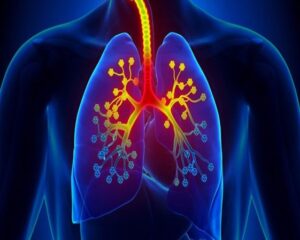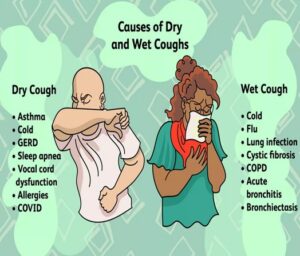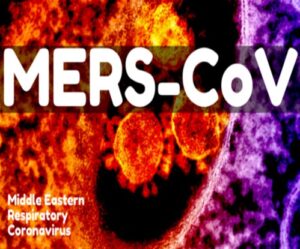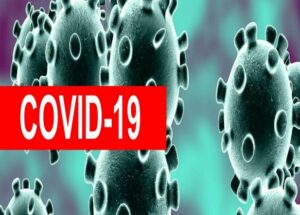15 Respiratory Diseases
15 00 Asthma
15 01 Bronchitis
15 02 Chronic Obstructive Pulmonary Disorder (COPD)
15 03 Dry cough
15 04 Influenza
15 05 MERS-CoV
15 06 SARS-CoV-2 (Coronavirus disease)

Respiratory or lung diseases are pathological conditions affecting the organs and tissues that make gas exchange difficult in air-breathing animals. Respiratory diseases range from mild and self-limiting, such as the common cold, influenza, and pharyngitis, to life-threatening diseases, such as bacterial pneumonia, pulmonary embolism, tuberculosis, acute asthma, lung cancer, and severe acute respiratory syndromes, such as COVID-19. Respiratory diseases can be classified in many ways, including by the organ or tissue involved, the type and pattern of associated signs and symptoms, or the cause of the disease.
Understanding the color treatment system is crucial as it can guide you in your treatment journey. Each disease or condition is assigned a unique code, which includes a treatment color. This system is designed to help you quickly identify the treatment options for your specific condition, empowering you to take control of your health.
Scroll down the site to find your disease or condition. Then, you look for the treatment color. The treatment colors are magenta (red-blue), blue, cyan (blue-green), green, yellow (red-green), and red. I give the treatment colors a number. Magenta = 0, blue = 1, cyan = 2, green = 3, yellow = 4, and red = 5. For instance, Asthma would then be categorized as 15-00-2. Here, the last digit, the treatment color, is cyan. The first two digits are the disease/condition group (Respiratory Diseases are 15). The next two digits (Asthma is 00) are the illness within the group, and the last digit (cyan is 2) is the treatment color. This system can help you quickly identify the treatment options for your specific condition.
When you use the projector, click on your treatment color, and a large image of it will appear. Make the color cover the whole page and project it onto yourself. When you use the LED light bulb, you choose your color manually.

Asthma, a disease that affects the lungs, is more common than you might think. It is one of the most prevalent long-term diseases in children, but adults can also be affected by asthma. Asthma causes wheezing, breathlessness, chest tightness, and coughing at night or early morning. If you have asthma, you have it all the time, but asthma attacks occur only when something irritates your lungs.
We don’t know all the things that can cause asthma, but genetic, environmental, and occupational factors have been linked to its development.

Bronchitis is an infection of the central airways of the lungs (bronchi), which causes them to become irritated and inflamed. As a result, the central airways branch off on either side of your windpipe (trachea).
They lead to smaller airways within your lungs called bronchioles. The walls of the central airways produce mucus to trap dust and other particles that could otherwise irritate. Most cases of bronchitis occur when an infection irritates and inflames the airways, leading them to produce more mucus than usual. Your body attempts to expel this excess mucus through coughing.
Bronchitis is classified into two categories: acute bronchitis and chronic bronchitis.

Chronic Obstructive Pulmonary Disorder (COPD) is a group of diseases and conditions that produce an inflammatory response in the lungs.
The inflammation occurs along the lining of the bronchial tubes, which act as passageways for air to reach the lungs. This leads to shortness of breath and difficulty breathing.
Although this disease can cause irreversible damage to the airways, appropriate treatment and prevention strategies can minimize further lung damage.

A cough is a reflex action that clears your airway of irritants and mucus. There are two types of coughs: productive and nonproductive.
A productive cough produces phlegm or mucus, liberating it from the lungs. This type of cough is often associated with respiratory infections or conditions like bronchitis.
A nonproductive cough, known as a dry cough, does not produce phlegm or mucus. This type of cough can be caused by various factors, from allergies to acid reflux; sometimes, there is no apparent cause. Regardless of the reason, an ongoing dry cough can significantly impact your daily life, especially if it worsens at night.

Influenza is a viral infection that affects the respiratory system—the nose, throat, and lungs. It is commonly called the flu, but it’s not the same as stomach “flu” viruses that cause diarrhea and vomiting.
For most people, the flu resolves on its own. However, influenza and its complications can sometimes be deadly. Individuals at higher risk of developing flu complications include young children under age five, particularly those under six months, adults over 65, and residents of nursing homes and other long-term care facilities.
Additionally, pregnant women and those up to two weeks postpartum are at risk, as well as people with chronic illnesses such as asthma, heart disease, kidney disease, liver disease, and diabetes.

MERS-CoV, or Middle East Respiratory Syndrome (MERS), is a respiratory illness caused by a type of virus belonging to the coronavirus family. According to records, the incubation period—two to fourteen days—begins when a person is exposed to the virus and ends when they show symptoms.
MERS-CoV can vary in severity, with some individuals experiencing no symptoms, similar to mild upper respiratory infections. However, MERS-CoV can also lead to respiratory or kidney failure and can sometimes be fatal.
Individuals most at risk for severe illness include older adults, those with weakened immune systems, or individuals with chronic diseases such as diabetes or lung disease.

Coronavirus disease (COVID-19) is an infectious disease caused by the SARS-CoV-2 virus. It’s important to remember that most people infected with the virus will experience mild to moderate respiratory illness and recover without requiring special treatment. This knowledge can provide reassurance and alleviate some of the anxiety surrounding the virus.
However, some individuals will become seriously ill and need medical attention. Older people and those with underlying medical conditions, such as cardiovascular disease, diabetes, chronic respiratory disease, or cancer, are more likely to develop severe illnesses. Nevertheless, anyone can contract COVID-19 and become seriously ill or die at any age.
The virus can spread in small liquid particles from an infected person’s mouth or nose when coughing, sneezing, speaking, singing, or breathing.